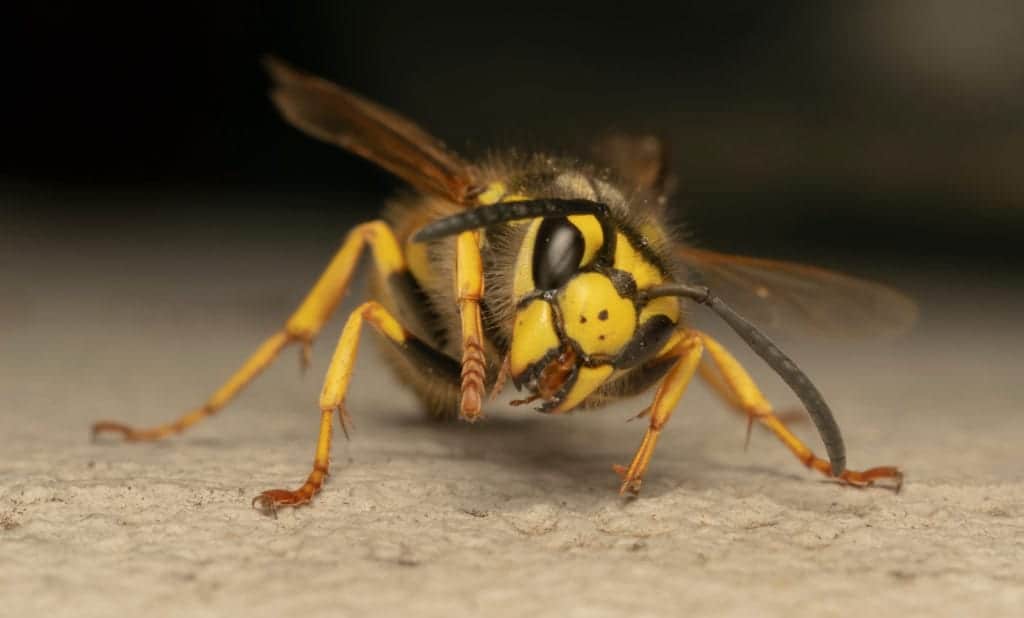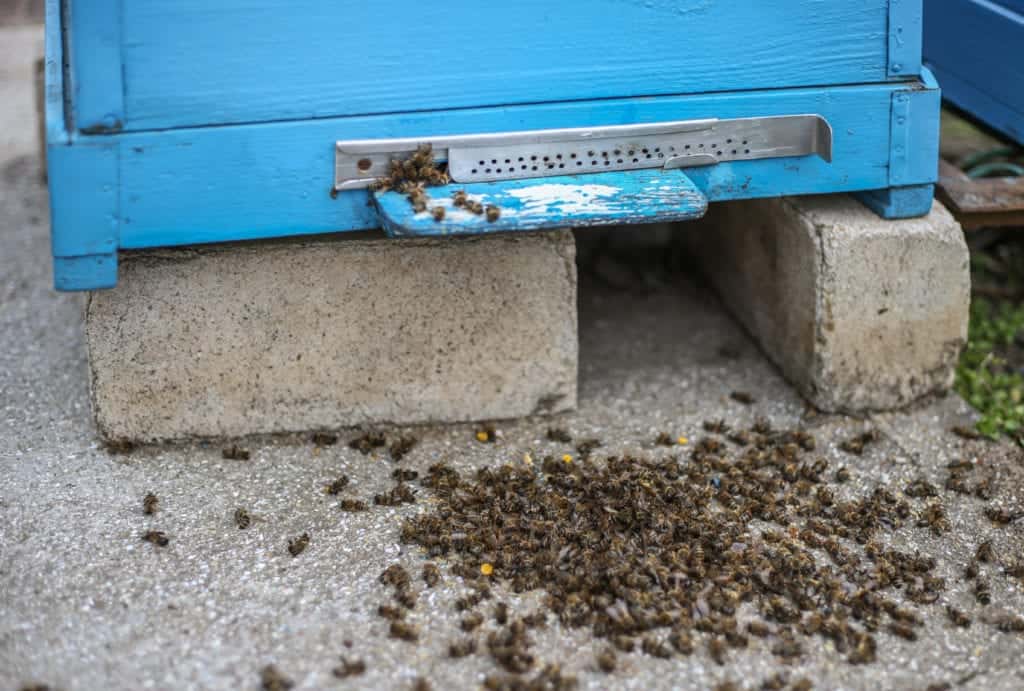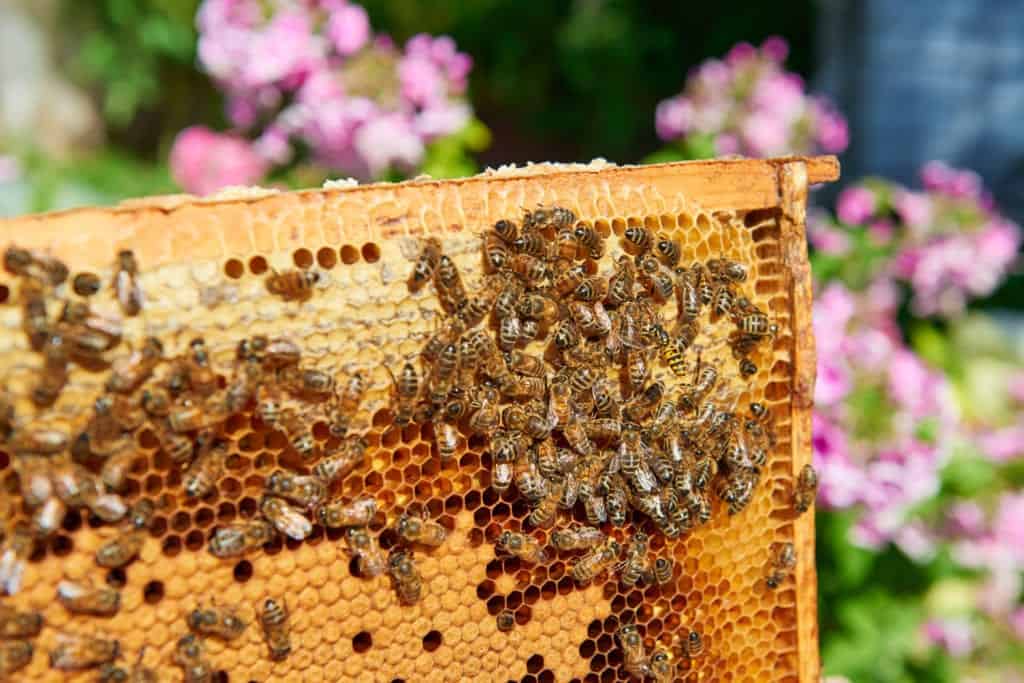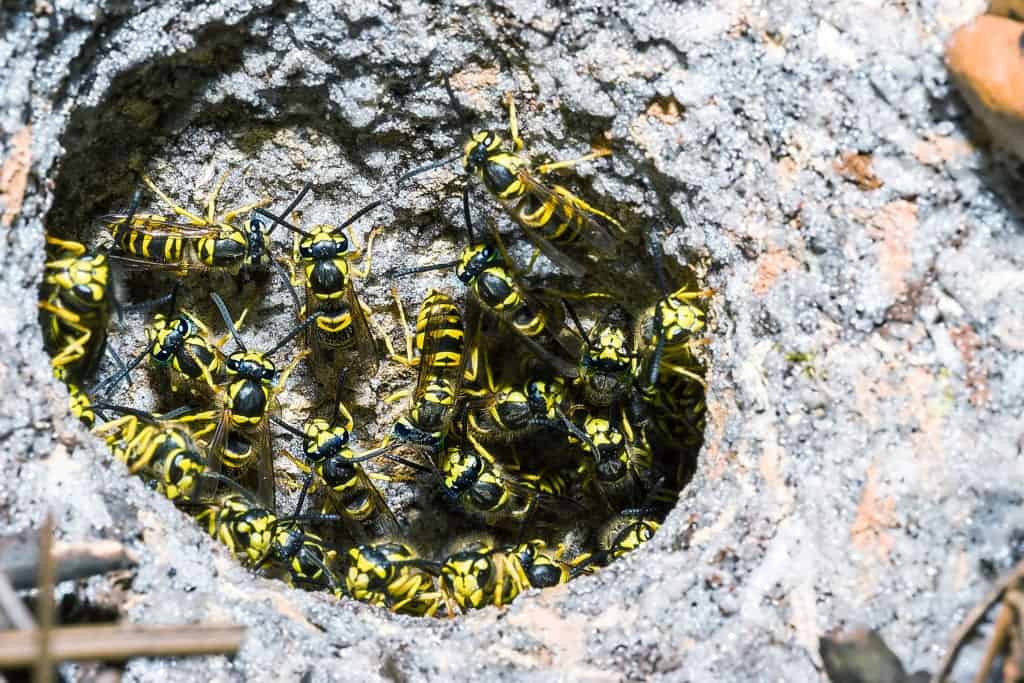Opportunistic Raiders
Opportunistic Raiders
Killer Cousins
Yellow jackets are rather aggressive and territorial insects. They have been known to sting unprovoked and are prone to swarming if approached. In fact, out of their family Hymenoptera, the yellow jackets may be the most aggressive species. When they attack, yellow jackets tend to sting repeatedly with their venomous stingers and will even bite their victims. Their aggression tends to spike in the months of Autumn and reports of stings increase at this time. Executive member of the Montgomery Country Beekeepers’ Association of Pennsylvania, Scott Famous, states that, “when the weather turns colder, food sources disappear and [the yellow jackets] begin to starve. Starvation makes them angry and aggressive as they work hard to seek food.” When this aggression spikes, not only humans bear the brunt of their sour dispositions. It is actually common for yellow jackets to attack and even massacre the hives of their cousins: the honeybees. 
The Vicious Attacks
When attacking a hive, the yellowjackets will typically lie in wait at the entrance. This allows them to target the honeybees one by one as they are arriving or leaving the nest. The yellow jackets will quickly dispatch the unsuspecting bee before dismembering its body. Part of the corpse is eaten by the yellowjackets on the spot, while the remaining bits are brought back to the yellow jacket nest to be fed to their larvae. Luckily, not all hives are at risk of these vicious attacks. 
Healthy vs. Weak Hives
Doctor Justin O. Schmidt of the Southwestern Biological Institute in Arizona explains that, “in north, America, yellow jacket predation on honeybees is not a major problem in most cases.” Rather, yellow jackets will only target hives that are struggling and weak. When a hive is weakened and close to collapse however, a specific set of chemicals are produced which alert the yellow jackets of the weakened state of a hive. If the hive is weakened enough their attacks can escalate from picking off the bees at the entrance to an all-out siege, destroying the hive and taking their corpses, larvae, and honey all as sources of sustenance for themselves. Luckily, healthy honeybee hives are well protected and are very seldom at risk of being targeted by aggressive, hungry yellow jackets. “[Healthy] hives have a formidable defense,” says master beekeeper and apiary inspector for the State of Connecticut, Mark Creighton. “Worker bees assigned as guards fight off intruders with stings and they will also cluster in a ball around individual yellowjackets and “cook” them to death.” This ability to “cook” their attackers is a fascinating ability that honeybees use not only against yellowjackets, but other Hymenoptera invaders as well. Honeybees can create warmth through either a vigorous vibration of their abdomens or the violent shaking of the muscles that control their wings (but without actually moving the wings themselves). This can bring their body temperature up to roughly 110 degrees Fahrenheit which not only warms that bee in particular but can heat up surrounding areas. When a hive is under attack, bees will begin sending off pheromones of alarm out to their hive, alerting the rest of their colony of the danger and assembling the bees to strike. The honeybees will swarm the intruder, creating a massive cluster of aggressive bees furiously vibrating. This bundle immediately begins to heat the hornet above its capacity, cooking it alive. Shortly, after, the bees will disperse, leaving behind the corpse of the yellow jacket that expired from the heat. 
Controlling These Heinous Hymenoptera
Yellow jackets are undoubtedly a grumpy bunch of territorial insects. While they may not be as dangerous to humans as they are to weak honeybee hives, they’re stings are very painful, and they can potentially be fatal to an individual who’s allergic to their venom. If you come across these aggressive pests in your yard, it is highly recommended that you do not try to combat them on your own. Removing wasp and yellow jacket nests is a process and requires professional intervention to ensure safety. Stay safe, stay pest free, and call us anytime for more information on yellow jacket control in your area. 
Citations
8 of the Worst Stinging Insects (2017) SciShow. Available at: https://www.youtube.com/watch?v=3NHJjEFk32c&t=322s (Accessed: May 2020). Ambrose, K. (2019) Yellow Jackets: Fall’s Fearsome and Feisty Wasps that can Sting Repeatedly, The Washington Post. Available at: https://www.washingtonpost.com/weather/2019/11/09/yellow-jackets-falls-fearsome-feisty-wasps-that-can-sting-you-repeatedly/ (Accessed: September 2020). Ricciuti, E. (2019) Yellowjackets: A Look at Opportunistic Raiders of Honey Bee Hives, Entomology Today. The Entomological Society of America. Available at: https://entomologytoday.org/2019/03/28/yellowjackets-opportunistic-raiders-honey-bee-hives/ (Accessed: October 2020). Vogt, C. (2018) Types of Wasps That Are Very Aggressive, Sciencing. Available at: https://sciencing.com/types-of-wasps-12365156.html (Accessed: September 2020).
Request a Free Quote Today
(We do not share your data with anybody, and only use it for its intended purpose)
